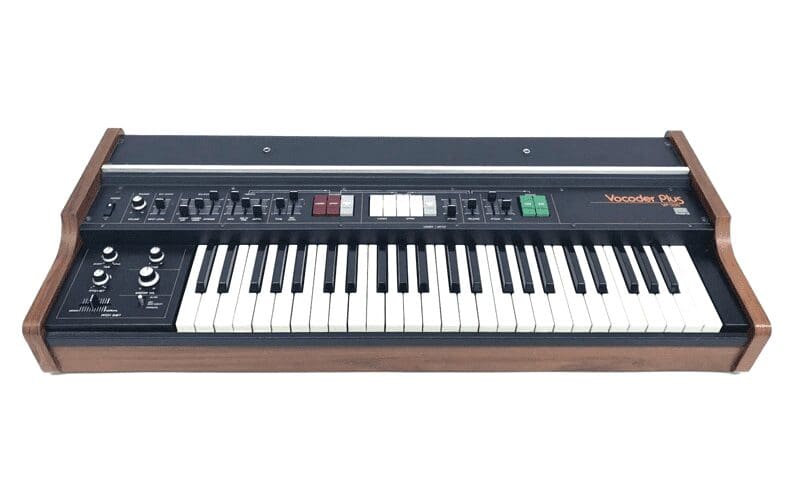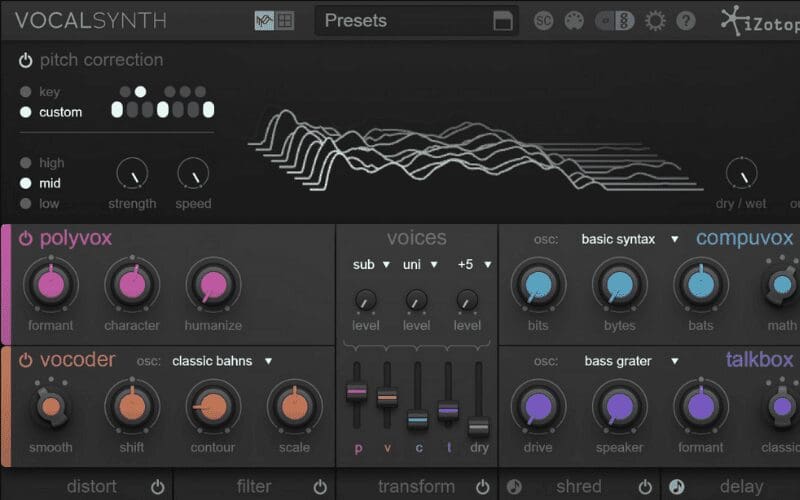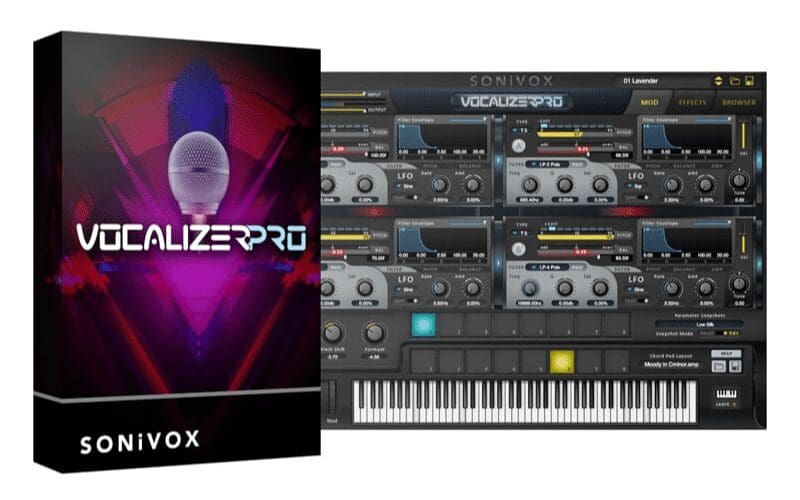Vocoders are an important tool in the world of music production and sound engineering. They are used to create unique and interesting sounds and to manipulate and process existing audio. Let’s explore the basics of vocoders and how they work, as well as some of the creative applications they can be used for in music production. We’ll also look at how different types of vocoders can be used to create interesting sounds.

What are Vocoders?
Bell Labs developed the first-ever vocoder back in 1928 and first exhibited it in 1939 at a fair that was conducted in New York. The proposed usage of it was initially to decrease the bandwidth of voice information to be easily transmitted across further distances.
Unluckily, the reformation of the voice of those early systems was not so impressive and so they were never used for this purpose – but they were eventually utilized to send encoded messages during the period of World War II.
How Do Vocoders Work?
The working mechanism of the vocoder revolves around analysing the sound of a modulator signal. Which is the voice of a human being.
Then the modulator signal is split or divided into further varied frequency bands where the level of every individual band is transferred as a signal to a relevant bandpass filter. Similarly, the filter has an identical frequency that was analyzed and a sound source. Known as carried is transmitted through the centre of filters.
Each bandpass level gets adjusted automatically to the correlating frequency in the modulator carrier signal. That way, the carrier is filtered so that the harmonic content is. Which goes through parallel to the modulator signal.
The use of vocoders never came into existence for civilian communication due to the machinic sound that it produces. However, they are happily used for creative motives.
As far as musical use is concerned, a synthesizer is frequently used as carrier frequency which lets it pitch to certain notes.
Vocoders achieved a lot of fame for musical use in the 1970s by popular artists. Including the likes of Kraftwerk, Boney M and Wendy Carlos.
Similarly, it is also quite frequent in advanced music and is used by musicians like D.A.F.T. Punk, Beastie Boys, and Zedd.
The Best Vocoders In The World
We dig deep and explore a list of the best vocoders in the world.
1. Korg VC-10

PRICE: $1,000 – $1,500 range second hand
It is one of the most fascinating additions to the magnificent Korg line of keyboard instruments & accessories. While bringing lifetime opportunities that were only approachable to some of the musicians in recording studio applications.
The Korg VC-10 enables music producers and musicians to make their music with a unique sound and melody.
Despite vocoders being around for so long, their usage of music in live performance scenarios has been restricted. This is because of heavy costs and complicated working operations.
Contrarily, the latest Korg VC-10 has been immensely simplified with the way it works. It is the only of its kind with a built-in polyphonic keyboard sound source that also comes with a very affordable price tag.
Pros
- Fantastic onboard vocoder along with a free gooseneck mic, crystal clear sounds, and premium effects.
- A fine combination of arpeggiator and modulation sequencer with added editor software and included USB MIDI.
Cons
- There is room for improvement in the displays and a shortcoming in the aftertouch with a lack of half a radius.
Note: We recommend you check out the Korg Microkorg.
2. Roland VP-330 Vocoder Plus

PRICE: $3,000 – $4,500 range second hand
At its peak, the VP-330 Vocoder Plus achieved splendid fame with many artists back in those days. Including Vangelis and 10CC utilising its sound in their recordings.
Nowadays, it is highly in demand. But there is a lack of availability in the secondhand market, considering its been discontinued for many years.
Roland has designed the vocoder’s sound and functions with their famous ACB technology. Which adds to its range big time. Its power source can be extended over USB with the help of your computer. Additionally, you could utilize the batteries or USB power supply to charge the unit.
As far as the front panel is concerned, it has two ribbon controls which are used for numerous functions. Depending on the chosen mode it works quite decently even without real wheels.
Pros
- A vocoder synth that has a super clear sound along with a human voice addition and strings option.
Cons
- It comes without a wall-wart power supply input or a built-in source of power supply.
- The mic is too short for the liking of many users.
Note: We also recommend you check out the Roland VP-03
3. Moog 16 Channel Vocoder

PRICE: $8,000 – $12,500 range second hand
As its main prospect, Moog 16 vocoder comes with 16-voice models where each voice has its own separate three envelopes. Along with two filters, a noise generator and a mixer having external audio.
The vocoder’s users are able to make a waveform that is not traditionally experienced in analogue synthesizers. Whereas, each oscillator part also has hard sync, ring modulation, and unique sound.
As far as onboard effects are concerned, the Moog features two independent effects processors that provide everything from traditional choruses and delays.
It also possesses a suite of reverbs which are officially licensed. On one hand, the Moog has enriched modern control. At the same time, routing and preset control management tend to be on the analogy side.
However, the synthesizer has a premium build. A combination of the aluminium enclosure, ash cabinet and cool matte-ish black keys make it an all-impressive outlook.
4. EMS 2000/3000 Vocoder

PRICE: $300 – $800 range second hand
Developed by British synth maker EMS are renowned not only for great vocoders but for their traditional VCS3. They have their own specialized retro vocoders, loved by many music creators worldwide.
Being circulating around since the 1970s, it has established itself as one of the very best options for that classic vocoder sound.
The 2000 Vocoder has 16 channels of vocoding with filters, oscillator, voice detection and noise sources.
With the EMS 3000, the individual controls for every band and knob switch on the front panels with an addition of a new LED meter signal. Vangelis and Jimmy Edgar have been using it since it was launched in 1977.
Online Vocoders – VST Vocoder Plugins

When you consider vocal processing, one of the most amazing effects one can take the most out of is the vocoder VST plugin.
To put it in a simplistic manner, it is something that is used for the purpose of synthesizing the human voice. It could be a tremendous way for adding some spark to a recording or vocal performance through a microphone.
One of the most highly known instances of best vocoder use could be D.A.F.T. Punk’s huge hit record “Harder Better Stronger Faster”. Whereas the vocoder used by the French house duo had a significant role in converting that song into a big thing.
As far as music producers are concerned, it’s an ideal way to put vowel sound effects to the bass patches. One could even use them to form experimental sounds like percussion.
In the same way, there are many vocoder VST plugins available in the market that works straight from your DAW or Beat Maker software. So to help you navigate what’s the best VST plugin for your buck, we review six of the best.
1. VOCODEX By Image-Line

PRICE: $120 USD / 89 EUROS / £100 GBP
Developed by Fruity Loops Studio, Vocodex is cost-effective and simplistic to use vocoder. With a thoroughly straightforward interface so that even novices could use it with use.
The controls available are only a few. It has an info bar that shows the function of control when you roll over it.
Similarly, it comes with as many as 100 filter bands. This means you will be able to have comprehensive sound from it. As well as varied carrier options along with some basic functionalities.
2. VOCALSYNTH By Izoptope

PRICE: $199 USD / 140 EUROS / £150 GBP
VocalSynth is another high-intensity vocoder plugin made by iZotope. It comes with plenty of fine features for the purpose of making sublime vocal effects.
The interface of this vocoder plugin has four primary panels. Including vocoder, talkbox, Polyvox and Compuvox.
Being true to its name, the vocoder panel could be used to make a classic robotic voice effects pedal. You can opt for a good variety of numerous modes to use.
It varies from vintage hardware sounds to much more modern digital tones.
In the same way, the talk box imitates the iconic sound of the same name. Which is more like a vocoder but comes with its own distinguished tone.
The Polyvox part is utilized to make enriched vocal harmonies and Electro Harmonix. With the help of a polyphonic pitch shifter and this tool produces multiple ranges of effects from natural backing vocals to artificial voices.
Regarding Compuvox, its panel is helpful for putting together a computerized quality to your desired sounds.
This means that be it an old-fashioned speech synthesis or modern vocal effects, you can tweak around to create endless possibilities.
Apart from these four primary panels, there are a lot of other intriguing features in this plugin. Including filters, pitch rectification, distortion, delay, etc. It is a premium vocoder with a high price tag. But nevertheless, it deserves this investment without a doubt when you ponder its multidimensional functions.
3. MORPHODER By Waves

PRICE: $30 USD / 20 EUROS / £20 GBP
Morphoder is deemed as the most powerful streamlined vocoder so far which is enriched with a built-in synth to use as the carrier.
It has limited controls and lets you choose from as many as ten pre-programmed patches. It has a five-band EQ which is utilized to process the output of the vocoder. Whereas the second is further amended with formant, smoothing and releasing options.
Similarly, a final output section is used as a mixer for four primary parameters of Morphoder.
You can have a slider for mixing in the carrier and noise whereas, there is a slider to manage the balance for each aspect. Despite Morphoder’s lack of controls compared to other plugins, there is no doubt about the fact that is a fine vocoder with fantastic sound.
It also comes with a straightforward interface which makes it convenient to dial in tone.
4. VOCALIZER PRO By Sonivox

PRICE: $50 USD / 35 EUROS / £35 GBP
It is another top-quality vocoder VST with distinguished features and a four-module system at its core.
Its modules have the capacity to be routed in varied versatile ways to let you tweak the sounds in countless ways.
Each module comes with options like pitch shifting, filtering, and modulation with LFOs which can help with auto-tune. Whereas you can combine the four modules with each other. Letting you innovate even more complicated patches.
Other than being a great home recording studio tool, it is integrated for performance purposes too if you gig live.
The top row is used for saving multiple presets and parameters for prompt recall. While the bottom row is utilized for shaping the chords for ease of sequence from your MIDI controller.
5. WALDORF LECTOR

PRICE: $156 USD / 120 EUROS / £110 GBP
Only after having one quick glimpse of Waldorf Lector, it can be easily determined that it is a very compact vocoder.
It has a modern interface which is filled with control knobs and multiple functions.
Additionally, it comes with two oscillator synthesizers, a dynamic filter and varied effects like distortion, reverb and delay.
It also has 100 filter bands. This means you can have access to high details with your carrier.
6. RAZOR By Native Instruments

PRICE: $65 USD / 40 EUROS / £45 GBP
These vocoders are technologically soft synths. However, Razor comes with a first-class vocoder function that is built-in. Contrary to its look, it is a power-packed software that delivers a punch.
Other than having the capacity to make classic vocoder sounds, it lets you craft more adventurous styles it as well.
Razor isn’t in our opinion the best in the market. But still, enables you to create great sounds, and as a full-fledged synthesizer is impeccable. That way, we believe it justifies its price tag.
Our Final Thoughts on Vocoders

If you can afford it, we highly recommend you invest in an original second-hand classic Vocoder like the Korg or Moog. You just can’t beat the analogue sound for quality. However, if you are on a tighter budget, we would suggest looking closely at the Sonivox VST Plugin.
It’s fair to say that whilst vocoders are definitely in the retro-sounding space. It’s still being utilised in many modern-day pop music and hip-hop hits and releases. So, well worth adding to your studio synth library.
We hope you enjoyed this little article. Hopefully, if there’s a vocoder required, you’ll now know which one to choose and how a vocoder works! Please share around and check out some other of our gear reviews!











